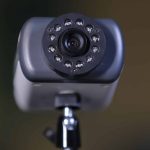In a world dominated by sound, dogs with hearing impairments can find daily life challenging. As their human companions, we must devise ways to communicate that transcend the barriers of sound. Visual cues, including hand signals and other non-verbal commands, are a powerful tool in training deaf dogs, promoting positive behavior and establishing a strong bond of understanding. In this comprehensive guide, we will delve into the realm of training deaf dogs, using visual cues and hand signals to bridge the communication gap.
Understanding the Needs of Deaf Dogs
Before we venture into the specifics of using visual cues and hand signals, it’s imperative to grasp the needs of deaf dogs. Just because a dog cannot hear does not mean that they are any less intelligent, responsive, or eager to please their owners. With a little patience and plenty of positive reinforcement, dogs with hearing impairments can learn just as well as their hearing counterparts.
En parallèle : Can Parrots and Other Birds Live Together Harmoniously?
When training a dog with a hearing impairment, remember that the lack of auditory input does not mean a lack of attention. Unlike humans, dogs primarily rely on their senses of smell and sight. They are highly visual creatures, making them exceptionally receptive to visual cues and signals. The key lies in understanding their world and adapting your communication style to match it.
Utilizing Hand Signals for Training
Hand signals are a fantastic way to communicate with your dog. They are easy to understand, and most dogs will quickly pick them up with a little practice. Even better, you can use hand signals in conjunction with verbal commands, which is beneficial for dogs who may still have some residual hearing.
A lire en complément : What’s the Best Way to Introduce Fish into a New Marine Aquarium?
Firstly, choose your hand signals carefully. They must be distinct and unambiguous, avoiding any gestures that may confuse your dog. For instance, you could use an arm raised overhead for ‘sit’, a sweeping hand motion for ‘come’, and a pointing finger for ‘stay’. Remember, consistency is key. Changing your hand signals frequently will only confuse your dog and hinder their progress.
Once you’ve decided on your hand signals, start using them consistently during training sessions. Pair each signal with a treat to make it a positive experience for your dog. As your dog begins to associate the hand signal with the command and the reward, they will gradually learn to respond without the need for a treat.
Incorporating Visual Cues
Like hand signals, visual cues are an excellent tool for training a dog with hearing loss. These cues can be anything from a flashlight beam to a waving hand or even a specific facial expression. The trick is to select visual cues that are easily identifiable and distinguishable from each other.
One particularly effective visual cue is touch. For example, a gentle tap on the shoulder could signal ‘attention’, while a pat on the head could mean ‘good boy’. Touch is a universal language that dogs understand instinctively, making it a valuable tool in your training arsenal. Of course, always ensure that your touch is gentle and positive to maintain trust and rapport with your dog.
Adopting a Positive Training Approach
Training a deaf dog can be challenging, but it should always be a positive experience. The purpose of training is not just to teach commands but also to enhance your bond with your dog. This bond is built on trust and mutual respect, which can only be achieved through positive reinforcement.
Every time your dog correctly interprets a hand signal or visual cue, reward them with a treat, a pet, or a toy. This will reinforce the positive behavior and motivate them to continue learning. Remember, dogs with hearing impairments are just as capable of learning as any other dog. All they need is a little extra patience, understanding, and positivity from their human partners.
The Power of Repetition and Patience
Patience is the cornerstone of any successful dog training regimen. Training a dog with hearing impairments can be a slow process. However, with repetition and patience, your dog will start to understand and respond to your visual cues and hand signals.
In dog training, repetition is essential. Repeat signals and cues frequently and consistently. Your dog might not understand them at first, but with time, they will start to associate these signals with specific actions or responses. Patience is key here. Don’t get frustrated if your dog doesn’t get it right away. Keep practicing and reinforcing positive behavior, and you’ll soon see progress.
Training a dog with hearing impairments can seem daunting. However, with the right approach and techniques, it can be a rewarding and enriching experience. Always remember, the journey of training is as important as the destination. Enjoy every step of the way, and never forget to celebrate every little victory along the way.
Creating a Productive Learning Environment for Deaf Dogs
To effectively communicate with and train a deaf dog, it’s essential to create a productive learning environment that caters to their unique needs. Unlike their hearing counterparts, dogs with hearing loss may be more easily startled or anxious due to their inability to hear potential threats or sounds. This means that the training environment for a deaf dog should be calm, quiet, and free from visual distractions.
Keeping visual cues, both for rewards and for discipline, simple and consistently applied will help your dog understand and remember their meaning. For example, you might use a thumbs-up for good behavior and a stern finger waggle for bad behavior. Similarly, you can use a visual marker, like a red light, to signal the end of a training session or a blue light to indicate a time for rest.
In addition, consider training in a contained space, such as a fenced yard or a spacious room with doors. This gives your deaf dog room to move and explore, but also allows you to maintain control of the space and situation. In such a controlled environment, your dog will feel secure, fostering a sense of trust that is crucial for effective training.
Remember to keep the training sessions short, ideally no longer than 15 minutes at a time. Short, frequent training sessions will keep your dog’s attention and help them retain information better. Consistency is also critical; make sure to conduct training sessions at the same time and place every day. This can help acclimate your dog to the routine and prepare them mentally for learning.
Building a Strong Bond with Deaf Dogs
Training a deaf dog with visual cues also provides an opportunity to build a stronger bond with your furry friend. It requires you to be more in tune with your dog’s behavior, body language, and needs, fostering a deeper understanding and connection. As you communicate with your deaf dog through hand signals and visual cues, you’ll develop a unique bond based on trust and mutual respect.
Caring for and training a deaf dog also requires compassion and empathy. Understand that your dog may feel vulnerable due to their hearing loss, and may need extra reassurance and comfort from you. Always ensure they feel safe and loved, and never punish them for mistakes during training. Instead, use positive reinforcement to correct behavior and reinforce learning.
It’s also essential to socialize your deaf dog with other dogs and people. This will help them become more comfortable in different situations and environments, and also learn to pick up on visual cues from other dogs. You can do this by taking them to dog parks or arranging playdates with other dogs.
Conclusion: Enjoy the Journey of Training your Deaf Dog
Training a dog with hearing impairments might seem challenging, but it’s an opportunity to build a deep, meaningful relationship with your pet. Through patience, repetition, and the use of visual cues and hand signals, your deaf dog can learn to understand and respond to commands just as effectively as any hearing dog.
Remember to always maintain a positive training approach, using reward-based training methods and avoiding any form of punishment. The key is to create a supportive, loving environment that allows your dog to thrive while providing them with the guidance they need.
By embracing the journey and celebrating every small success, you will not only teach your dog the commands they need, but also create a bond of mutual trust and respect. Despite the challenges, the rewards of training a deaf dog extend far beyond obedience to include companionship, understanding, and a bond that is truly unique.













